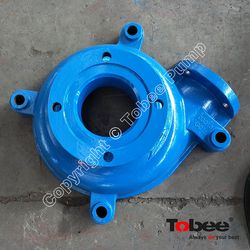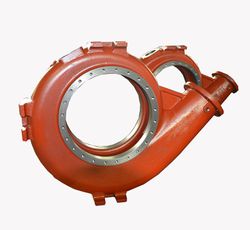
What is Pump Casing & How Does it Works? (2022 Guideline)
Pump casings prevent leakage and maintain pressure by sealing the inside of the pump to the atmosphere. Depending on the type of pump, the casing has a different structure. They surround the pump rotor in centrifugal pumps, which delivers energy to the fluid via the impeller(s) mounted on the rotating shaft. The casing of a positive displacement pump, on the other hand, encloses the displacing elements such as the piston. In practice, the shape of a pump's casing can already tell you what type of pump it is. The single volute, double volute, and vaned diffuser are the three most common casing types for centrifugal pumps. The single volute is the most prevalent - at least for low- to medium-flow single-stage pumps - with double volutes being utilized more for larger, single-stage pumps handling liquids without solids and vaned diffusers being used mainly for multistage pumps. There is a comprehensive list of Pump Casing Suppliers on the Linquip website that includes all OEM fleets. Casing type can significantly impact pump reliability (mean time between repairs) and, to a lesser extent, pump efficiency when pump flow rates are at or below the best efficiency point (BEP). Depending on the use, pump casings can be built of cast or wrought iron, chromium steel, or duplex steel. A plastic enclosure can also be seen on some pumps. Linquip offers a number of companies who specialize in pump services capable of handling a wide range of pump casing, whether for centrifugal or positive displacement pumps.
Need industrial equipment, parts, or services? Submit an RFQ and get quick quotes.
Get a QuoteNeed industrial equipment, parts, or services? Submit an RFQ and get quick quotes.
Get a QuoteTop Companies in Pump Casing
Top Devices in Pump Casing
Related RFQs
Pump Casing category
LNQ-22101589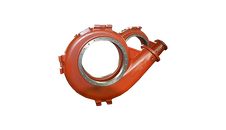
Pump Casing category
LNQ-22091214
Vertical Axial Flow Pump
LNQ-22021218
Top Pump Casing Experts
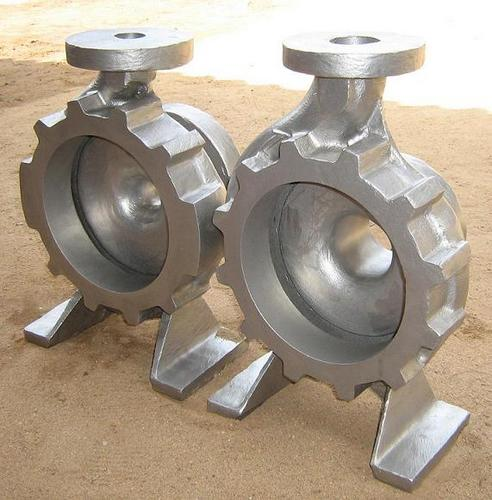
The impeller increases the velocity and pressure of the fluid while also directing it towards the pump exit. The pump casing is designed to constrict fluid entering the pump, direct it into the impeller, and then slow and control it before discharge.Here's a quick rundown on pump casing.
Pump Casing
The pump casing refers to the pump's outer shell. In terms of pressure and fluids, it must seal off the inside of the unit from the outside. When pump flow rates are at or below the best efficiency point (BEP), casing type can significantly impact pump reliability (mean time between repairs) and, to a lesser extent, pump efficiency. Although many pump applications aim to operate the pump at its BEP, this is frequently not achieved because of:
- The current pump system friction head is not precisely determined when purchasing a pump.
- Extra safety considerations were added to the pump selection to account for future wear.
- The pump wears out over time.
- Changes and/or increases in system friction occur throughout time.
- Changes in the system's static and/or friction head during normal operation.
Linquip has a variety of Pump Casing Suppliers and Companies that can provide you with the latest information about pump casing equipment. You are also encouraged to visit the List of Pump Casing Distributors in Linquip.
Pump Casing Structure
The casing is manufactured differently depending on the type of pump. The infeed and delivery of the flow to the impeller visually dictate the casing of a centrifugal pump. For these pumps, the casing is given special consideration since the distance between the casing and the impeller determines the pump's efficiency. They enclose the rotating or reciprocating displacement components of positive displacement pumps (e. g. one or more pistons). In practice, the form of a pump's casing already indicates its type.
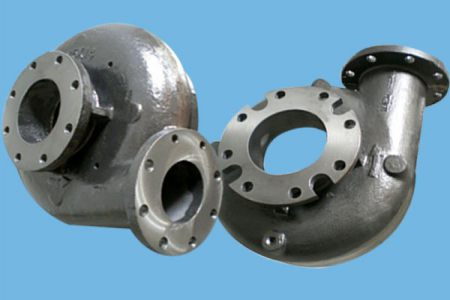
Pump casings might be cast or wrought iron, chromium steel, or duplex steel, depending on the use. Plastic housing is also possible for some pumps.
The inlet and outlet nozzles guide the fluid into and out of the pump and are commonly classed as inlet or suction nozzles and discharge nozzles (based on their purpose). They are either connected to the pipes (for example, using flanges or pipe unions) or:
- When using vertical tubular casing pumps, the suction-side nozzle is immersed in the open liquid tank.
- Both nozzles, as well as the entire pump casing, are immersed in the fluid, i.e. in submersible motor pumps.
You can visit Pump Casing Equipment in Linquip to get further information on this equipment.
Pump Casing Types
Shaft seals are required if the pump design calls for the drive shaft to pass through the pump casing to avoid excessive fluid leakage or air penetration. These sections of the pump casing are known as seal housing or stuffing box housing.
Almost every type of pump has a distinct casing that may be identified. As particular speeds increase, the following casing types are used:
- Volute casing, which is occasionally equipped with a double volute consisting of two volutes offset by 180° to balance the radial thrust.
- Vortex volute with an asymmetrical cross-section when viewed from the meridian.
- Circular (or annular) casing with a constant cross-section along the circumference.
- Tubular casing that directs the pump's flow diffuser axially downstream.
- Elbow casing pump with a diffuser that discharges into an elbow (casing).
Design Considerations of Pump Casing
The casing types are also influenced by the pressure range. Low-pressure pumps have distinct design considerations than high- and ultra-high-pressure pumps. The wall thickness of discharge casings must be raised as pressure levels rise. The size of the pump casing must, however, adhere to national and international rules and standards.
External geometry is designed to construct cylindrical, conical, or spherical pump casings in the case of volute casing and multistage high-pressure pumps. These designs are well-suited to manufacturing technologies utilized for making thick-walled (forged) components and minimize stresses on the pump casing despite high internal pressure.
Casings may also be divided for mounting purposes, with the split running radially or axially relative to the shaft.
Finally, the form of the pump casing is influenced by the location of the pump nozzles. In contrast to in-line pumps, which have nozzles oriented opposite each other, or refinery pumps with "top-top" nozzles, the axial input nozzle on volute casing pumps is a distinguishing feature of this pump type (both nozzles pointing vertically upwards).
FAQs about Pump Casing
- What Is The Composition Of A Pump Casing?
Duplex stainless steel (50 percent ferrite + 50 percent austenite) is used for the pump casing. The pressure-bearing sections are generally cast steel as the strength of cast steel increases, usually when the pressure exceeds 16Mpa. The most prevalent grade is ZG230-450, which is the national standard code.
- What Are The Different Types Of Pump Casing?
The single volute, double volute, and vaned diffuser are the three most common casing styles for centrifugal pumps.
- What Is The Internal Pressure Of The Pump Casing?
The main purpose of casing is to establish a pressure vessel by enclosing the impeller at the suction and delivery ends. In a single-stage pump, the pressure at the suction end can be as low as one-tenth of atmospheric pressure and as high as twenty times atmospheric pressure at the delivery end.



